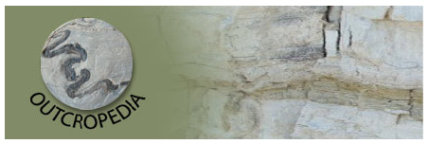The sheath fold in the photograph formed during dextral, southeast-side-up shear along the Assean Lake shear zone. The shear zone dips steeply to the southeast. In general, moderately ENE-plunging lineations in the shear zone are folded by drag folds that have commonly developed into non-cylindrical folds. The lineations and the folds are interpreted as having formed during dextral, southeast-side-up, thinning flow. In this photograph, the lineation on the ESE limb of the fold plunges moderately to the E, and the fold hinge lines plunge steeply to the SSW and shallowly to the NNE. The top of this photograph is towards the WNW. The lineation and fold hinge lines are thought to have partially rotated towards the direction of the maximum principal strain rate of the pure shear component, which may or may not be parallel to the shear direction (cf. Kuiper et al., JSG, 2007). PhotoID168
This is a Photograph of the Month in the Journal of Structural Geology
